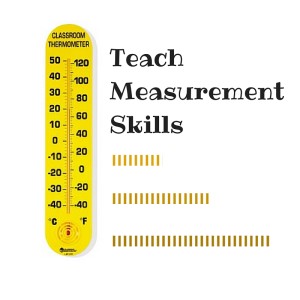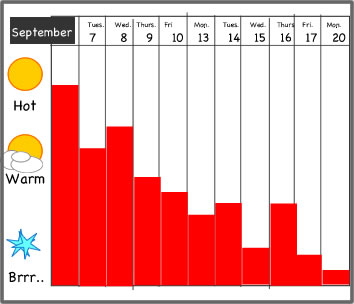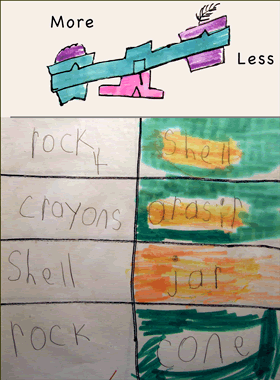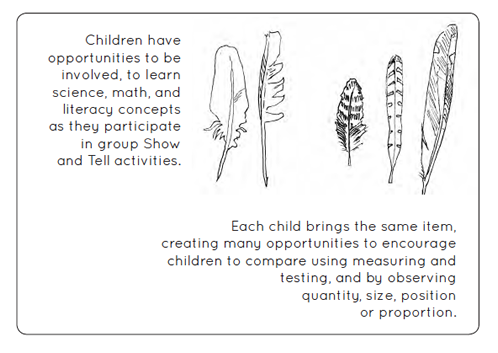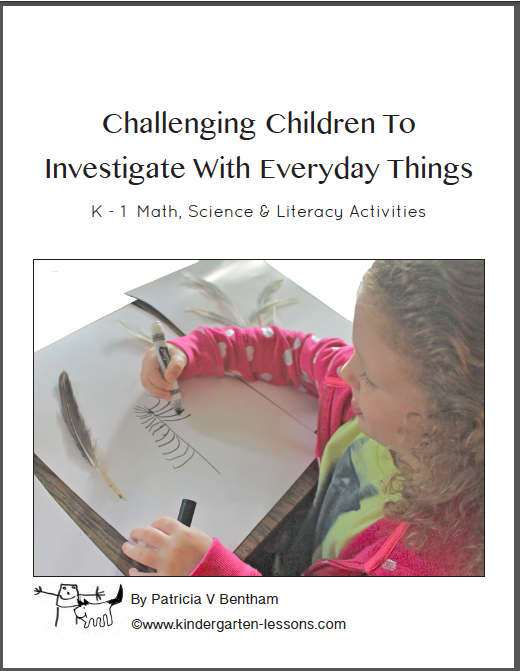Teaching measurement skills using inquiry play-based activities with open investigations, explorations, and small group, guided instruction, are best for young children.
Kids learn as they talk about and consider ideas from their immediate surroundings. As they observe you comparing different heights of towers of blocks to a classroom chair will spur them on to experiment on their own.
Depending on where you live, learning outcomes for teaching measurement skills to children vary, but generally young children need to experience the following.
- Classifying, describing and arranging objects using language such as shorter than, longer than…
- Describing time and temperature with terms such as longer, shorter, hotter, colder, warm…
- Comparing sizes of objects by using non-standard units e.g. line up blocks beside books, count the blocks
- Choosing a non-standard unit and using it to estimate, measure, compare, and order various objects
- Using a non-standard unit (link cubes for example) to cover the given area of objects. e.g. How many crayon boxes does it take to cover the desk?
Teaching Measurement – Time
Young children think of time as morning and night, longer days and shorter days, school days and weekends, story time and snack time.
Some things take longer to do, other things take a shorter amount of time to complete. Children need to understand this concept before they tackle hours, minutes and seconds.
Children can learn that clocks and calendars are tools to help us keep track of time and are useful when planning events and activities.
A fun time activity to help children build a concept of time:

- On a warm day, wipe a chalkboard with a damp cloth
- The darker water marks on the chalkboard evaporates quickly, usually within a minute
- Children observe how long it takes for the water to disappear (usually a minute or two).
- The children count slowly to the beat of your clapping and record how many claps until the water is all gone
- Experiment by squeezing first more and then less water out of the cloth
- Students are usually quite fascinated when watching the evaporation process and ask questions such as, “Where did the water go?” “Why?”
Measuring Temperature
Materials:
- Long, thin, red strips of paper
- The biggest thermometer you can find
Procedure:
- Each day a child takes a turn cutting the strip of paper to the same length as the red in the thermometer
- He/she then glues the strip on to a chart like the one in the image
- The children then compare the strips and report if the temperature is warmer, hotter or cooler than the previous day
- Children can also count how many hot days, how many cool days, etc.
Tip!!
Tie a string to the thermometer and attach the other end to a hook or something solid inside your classroom. When morning meeting / calendar time activities begin, open the window and slip the thermometer outside, then close the window.
When it is time to record, you will have the outside temperature without having it dropped or the classroom getting cold!
Recording children’s experiences
It is beneficial for children to record their measurement experiences.
In the activity on the right, the children chose two items, put them in balance scale buckets and then recorded the heaviest and lightest objects.
Children need lots of hands on experiences first and need to watch how your fill in the recording sheet. Don’t assume they will connect the picture of the bucket scale, for instance, with the real life experience.
- The rock, crayons, shell and other items the children weigh are labeled (tape the word right on to the rock or shell) to help the children spell the words on their recording sheets.
- Children print the object that is the heaviest on the left and the object that is the lightest or weighs less on the right.
Teaching measurement vocabulary
Strengthen the students’ measurement vocabulary by using measurement words often as they take part in daily kindergarten routines.
Reinforce terms such as: taller, shorter, small, large, lighter, heavier, hotter, colder, warm and variations of the terms such as large, larger, largest, morning. Also afternoon, evening, today, yesterday, tomorrow, week, year
Use vocabulary such as: thermometer, calendar, ruler, meter stick or yard stick, clock, and balance scale.
Teaching Measurement – Volume
A water center is useful for providing opportunities for children to have many experiences with measuring volume. Build the children’s vocabulary as they experiment with pouring water into taller, shorter, narrower, and wider containers.
Example: “Did the narrow, tall container hold the same amount of water as the wide, short one?”
Teaching Measurement with Everyday Things
My e-book, “Challenging Children to Investigate With Everyday Things”, helps you conduct easy and engaging math and science lessons for young children. This resource shows you how to provide your students with a new science and math investigation every week of the year.
The book:
- Shows you how to use common objects to expand your math and science programs
- Tips for getting organized for simple weekly lessons
- Contains 39 detailed activities with 50 recording sheets that go with them
- Demonstrates how to set up your classroom for effortless investigations
- Shows you how to focus children on investigation, observation, inquiry, and recording their new knowledge
- Provides sample inquiry questions to prompt students
- Illustrates how to teach sorting and classification skills
- Provides math and science vocabulary lists to introduce to the students
- Lists Science skills practiced in the activities
- Lists Math skills practiced in the activities
- Common Core Standards (USA)
- Provides a year’s worth of weekly activities that you can use over and over each year
- Sample parent letter
- Illustrated lists for the items that students are to bring to school each week
- Many tried and tested tips for easy to carry out, enjoyable learning times with your students
If you’re interested in the book, you’ll find more information here….
